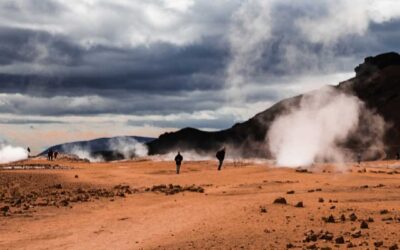Western forests are not doing so well. The temperate, evergreen forests that stretch from the Pacific Northwest to the high deserts of the Southwest are changing quickly, and it appears global warming is the cause.
The forests of western North America have recently been struck by a series of blows to the trunk. First, pests like the Western Pine Beetle attacked trees. Then an increase in catastrophic fires linked (ironically) to fire prevention efforts ravaged huge swathes of forest. Pollution has also been tagged as a cause of tree mortality. City smog travels inland and becomes trapped against mountain ranges by inversion layers in the atmosphere. Now, it looks like warming itself is responsible for the death of old growth forests.
A new study by scientists with the USGS, US Forest Service, and six universities in Canada and the US has shown that warming is the primary reason for an increase in tree mortality in the Western US and British Columbia. The study used data from 76 long-term plots spread across Western North America, an area that has experienced warming rates between 0.3 – 0.5 °C per decade between the 1970s and 2006.
Attempting to find specific causes for tree mortality is a complicated task, as there are many reasons an individual tree can kick the bucket. The authors of this study, by using a large, diverse, and long-term data set, were able to distill the effect of warming out of the many other reasons trees might die. The size and extent of the data allowed researchers to contrast the effects of, say, fires or pollution with the temperature changes that have occurred over this time. The conclusion: only warming explains the startling increase in mortality rate across all of Western North America.
In some places, the mortality rate has doubled. A change from 0.3% per year to 0.6% might not seem particularly scary, but consider that a persistent doubling of mortality rates will decrease a forest’s average age by more than 50%. Although entire forests are not likely to disappear, the forests we currently know will not survive much longer.
New forests will be younger, with little to no old growth and lower age variability. They will also be thinner. (Global warming: the ultimate forest weight-loss strategy!) Scarier still, warming in the West has not seen an increase in growth and recruitment of young trees to combat the loss of older cohorts. Young trees are often the first to fall to ecological stress, but there are generally so many of them that the losses are easily balanced out by the gains. In fact, tropical forests of the world have seen a net increase in biomass and recruitment from warming. Now we know growth rates are heading in the opposite direction in western North America.
Better get out there and hug a big tree while there are still some left!
Brought to you by terrapass.com
Featured image








